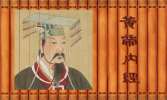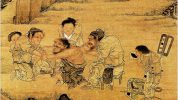MERIDIANs and our bodies
System of Meridian/ Channel Network
MERIDIANs and our bodies
System of Meridian-Channel Network
The meridian system can be divided into three main parts: the meridians (Jing), the collaterals (Luo), and the tendino-muscular regions and superficial pathways (Jingjin and Pibu). The system spread throughout the entire body, serving as channels for the circulation of Qi, blood, and body fluids. Also, those that run vertically are called meridians, and those that run horizontally are called collaterals. The system is connecting and integrating the body’s organs, fascia, bones, muscles, skin, and sensory orifices into a cohesive system. As stated in the Huangdi Neijing (The Yellow Emperor’s Inner Canon), Lingshu (The Spiritual Pivot), Chapter Ben Cang:
“The meridians function to circulate Qi and blood, regulate Yin and Yang, nourish the tendons and bones, and facilitate joint movement.”
1. Meridians
Common Name: Jing/Jingmai
The meridians can be classified into three categories: the primary meridians (Zhengjing), the extraordinary meridians (Qijing), and the longitudinal branches of the primary meridians, known as the “Twelve Divergent Meridians” (Shier Jingbie). A detailed introduction to these three categories is as follows:
1.1 Twelve Primary Meridians
Common Name: Main Channels/Regular Meridians/ Zheng Jing
Hand-Taiyin
Hand-Yangming
Foot-Yangming
Foot-Taiyin
Hand-shaoyin
Hand-Taiyang
Foot-Taiyang
Foot-Shaoyin
Hand-Jueyin
Hand-shaoyang
Foot-Shaoyang
Foot-Jueyin
1.2 Eight Extraordinary Meridians
Common Name: Qijing 8 Mai/ Qijingbamai
Please click 13–20 to explore the Eight Extraordinary Meridians.
Renmai
Dumai
Chongmai
Daimai
Yinciaomai
Yangqiaomai
Yinweimai
Yangweimai
1.3 The Twelve Divergent Meridians
Each primary channel has its own divergent channel, so there are 12 primary channels and 12 divergent channels. The divergent channel of the Yang primary channel separates from the primary channel on the limbs, enters both the primary channel’s Yang organ and the internally-externally related Yin organ, comes out at the supraclavicular fossa, neck, or face, and then rejoins the primary channel. The divergent channel of the Yin primary channel separates from the primary channel on the limbs, enters the primary channel’s Yin organ, connects with the divergent channel of the internally-externally related Yang primary channel, and then joins the Yang primary channel.
2. Collaterals Meridians
Common Name: Luo/Luomai
Collaterals
Common Name: Luo/Luomai
Large Luo/ Daluo
Float Luo/ Fuluo
Grandson Luo/ Sunluo
2.1 The Fifteen Divergent Collaterals
2.2 Superficial Collaterals
2.3 Tertiary Collaterals
3. Subsidiary parts of the meridians
Common Name: Luo/Luomai
3.1 The Twelve Sinew Regions
3.2 The Twelve Skin Regions
Note: [Suwen], in the chapter “Discussion on the Cutaneous Regions,” states: “The skin is divided into regions.” “The skin is the external manifestation of the meridians.”


